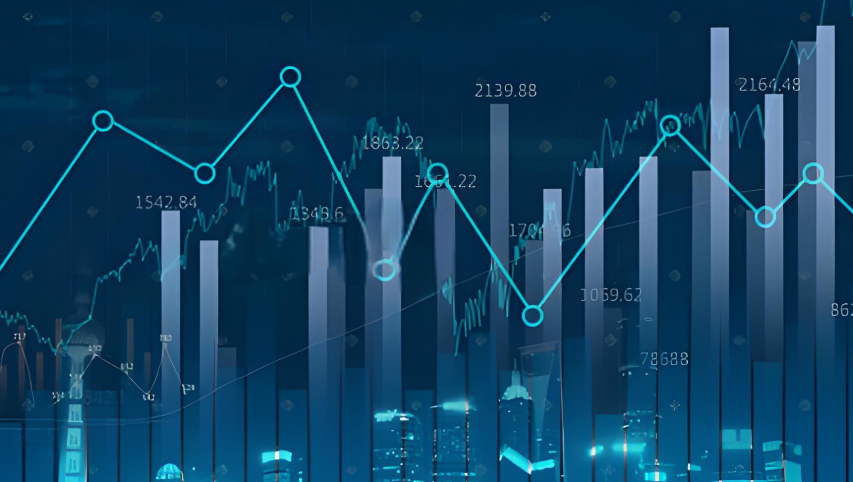Strengthening of the Dollar Against the Yen
Advertisements
The foreign exchange market has been buzzing with activity lately, particularly with the ongoing fluctuations between the U.S. dollar and the Japanese yen. As of recent trading sessions, the dollar has maintained a strong position against the yen, hovering around the 157.706 mark, which signifies an increase of about 0.26% for the day. This upward movement indicates a prevailing sentiment favoring the dollar while casting doubt over the yen's performance. The situation is primarily driven by expanding interest rate differentials and market perceptions concerning the Bank of Japan's future rate hikes, creating a complex environment for traders and investors alike.
Japan's economic landscape, while showing some signs of resilience, has left the yen under significant pressure. One of the key indicators, the au Jibun Bank's Purchasing Managers' Index (PMI) for December, showcased a continued expansion in the service sector for the second consecutive month. However, the PMI figures were adjusted down to 50.9, falling short of the preliminary estimate of 51.4. This modest performance did little to lift market sentiment surrounding the yen. The Bank of Japan's announcement in December, which lacked a clear timeline for future interest rate hikes, has left analysts and traders uncertain about the path forward, especially amidst growing global and domestic uncertainties.
The uncertainties surrounding the Bank of Japan’s interest rate decisions have fostered a perception of caution in the market, with analysts speculating on the likelihood of a rate increase to 0.50% by the first quarter of 2025. However, any immediate rebound in the yen remains elusive. Under the leadership of Governor Kazuo Ueda, the Bank has emphasized the necessity to consider various risk factors in any rate hike decision, such as economic recovery, persistent inflation, and external economic risks. These complexities have further muddied the waters, making it harder for the market to predict the timing of any monetary policy shifts, and consequently amplifying the yen’s ongoing vulnerabilities.

Across the Pacific, the U.S. dollar is buoyed by ongoing strength in economic data and hawkish signals from the Federal Reserve. Notably, while the manufacturing PMI reported under 50 in December hinted at a contraction in manufacturing activity, there are underlying signs that continue to portray resilience in the U.S. economy. The Federal Reserve's stance in its December meetings suggested a potential slowdown in the pace of rate cuts, as highlighted by San Francisco Fed President Mary Daly, who noted that inflation, although retreating, remains stubbornly above the 2% benchmark. Such messages reinforce the idea that high interest rates could persist longer than initially anticipated, supporting an upward trend in U.S. Treasury yields and lending strength to the dollar.
From a technical analysis perspective, the dollar-yen pair appears to be on a sustained bullish trend. Trading close to 157.70, the dollar is nearing monthly highs from December. Should this trend continue, resistance is anticipated around the 158.00 area. A breakout beyond this level could open the pathway for further appreciation, possibly testing mid-term resistance at around 158.45 and the psychological threshold of 159.00. Daily momentum indicators signal robust strength for the dollar-yen pair, without significant selling pressure visible on the horizon.
Looking ahead, the ongoing disparity between U.S. and Japanese monetary policies will remain a focal point for traders. The hawkish posture of the Federal Reserve is a driving force behind the dollar's momentum, reflecting solid confidence in the U.S. economic outlook. This continues to funnel capital into dollar-denominated assets, further bolstering the currency's position. On the flip side, the uncertainty surrounding the timing and scale of potential rate hikes from the Bank of Japan adds to the dollar-yen dynamic, solidifying the greenback’s dominance in this pairing.
Recent improvements in Japan's service sector data have not shifted the intense scrutiny of the Bank of Japan's policy direction. The market remains keenly focused on whether the central bank can deliver on expected rate increases and the potential magnitude of such actions. Investors are particularly attentive to the implications of these decisions, as they directly influence the supply and demand dynamics for the yen. The interplay between these central bank actions and economic indicators will be paramount in shaping future currency movements.
In this rapidly changing and complex financial landscape, investors are urged to stay vigilant, placing emphasis on upcoming U.S. economic data releases and any statements from the Bank of Japan. Key indicators such as employment figures, GDP growth rates, and inflation metrics are critical benchmarks for evaluating the health of the American economy, directly impacting investor sentiment towards dollar-denominated assets. Conversely, any shifts in the Bank of Japan’s monetary policy—whether through interest rate adjustments or changes in quantitative easing—can markedly influence the yen's market dynamics.
The intersection of these factors is critical and serves as a litmus test for market sentiment regarding the dollar-yen currency pair. A breakthrough of key resistance levels in the dollar-yen exchange would suggest a renewed bullish sentiment in the market, potentially drawing in more capital and further pushing prices upward. Alternatively, should the yen make a significant rebound and break critical support levels, cautious sentiment may prevail, prompting investors to reassess their strategies and reallocate assets accordingly. Thus, preparedness and adaptability will be key for investors navigating this volatile terrain, as they must be ready to pivot their approach based on rapid market shifts.
Leave Your Comment